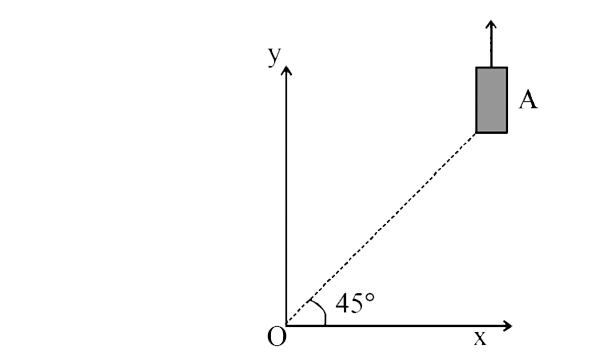An object is released from rest. The time it takes to fall through a distance h and the speed of the object as it falls through this distance are measured with a pendulum clock. The entire apparatus is taken on the Moon and the experiment is repeated. Then,
the measured times are same.
the measured speeds are same.
the actual times in the fall are equal.
the actual speeds are equal.
The correct Answer is:A, B
Topper's Solved these Questions
- OSCILLATIONSBOOK - RESNICK AND HALLIDAYCHAPTER - OSCILLATIONSEXERCISE - Problems
39 Videos
- MOTION IN TWO AND THREE DIMENSIONSBOOK - RESNICK AND HALLIDAYCHAPTER - MOTION IN TWO AND THREE DIMENSIONSEXERCISE - PRACTICE QUESTIONS (MATRIX-MATCH)
10 Videos
- PHOTONS AND MATTER WAVESBOOK - RESNICK AND HALLIDAYCHAPTER - PHOTONS AND MATTER WAVESEXERCISE - PRACTICE QUESTIONS(Integer Type)
4 Videos
Similar Questions
Knowledge Check
An object is released from rest. The time it takes to fall through as distance h and the speed of the object as ilt fallls through this distance are measured with a pendulum clock. The entire apparatus is taken on the moon and the experiment is repeated
Athe measured times are sameBthe measured speeds are sameCthe actual times in the fall are equalDthe actual speeds are equalA stone is allowed to fall freely from rest. The ratio of the time taken to fall through the first metre and the second metre distance is
A√2−1B√2+1C√2DNone of theseA particles is dropped from certain height. The tame taken by it to fall through successive distance of 1 m each will be
Aall equal being equal to √2/g secondBin the ratio of the square roots of the integers 1,2,3…Cin the ratio of the difference in the square roots of the integers i.e.,
√1,(√2−√1),(√3−√2),(√4−√3),….DIn the ratio of the reciprocals of the square roots of the integers, i.e., 1√1,1√2,1√3 ,,…
On a frictionless horizontal surface , assumed to be the x−y plane , a small trolley A is moving along a straight line parallel to the y−axis ( see figure) with a constant velocity of (√3−1)m/s . At a particular instant , when the line OA makes an angle of 45(∘) with the x− axis , a ball is thrown along the surface from the origin O. Its velocity makes an angle ϕ with the x− axis and it hits the trolley .
(a) The motion of the ball is observed from the frame of the trolley . Calculate the angle θ made by the velocity vector of the ball with the x−axis in this frame .
(b) Find the speed of the ball with respect to the surface , if ϕ=(4θ)/(3).

View SolutionA body has a free fall from a height of 20 m. After falling through a distance of 5 m, the body would
View SolutionA particle is dropped vertically from rest from a height. The time taken by it to fall through successive distances of 1 m each will then be
View SolutionA stone falls freely from rest from aheight h and it travels a distance h/2 in the last second. The time of journey is
View SolutionA body freely falling from the rest has velocity v after it falls through a height h the distance it has to fall down for its velocity to become double is
View Solution
